Briefing on Arctic and Antarctic sea ice - June 2021
Alex West and Ed Blockley
Summary
- Arctic sea ice extent on 14th June 2021 was the 5th lowest on record for the time of year.
- Extent was well below average in the Kara, Laptev and Chukchi Seas, but in other coastal seas summer melt has only recently commenced.
- May 2021 Arctic sea ice extent was somewhat below average but above the long-term trend.
- Winter 2020-21 was the joint 4th mildest in the Arctic, being 2.3°C warmer than the 1981-2010 average. Milder than average conditions were predominant everywhere except in the Beaufort and Chukchi Seas, where temperatures were near-average.
- End of winter ice thickness was likely higher than the 2011-2020 average in most of the Arctic Ocean coastal seas, but lower in the Central Arctic.
- Reliable predictions of September extent cannot be made at this point in the melt season. Statistical predictions based on daily extent achieve some skill by mid-July.
- Antarctic sea ice extent on 14th June 2021 was slightly above the long-term average.
Current Arctic sea ice extent
Arctic sea ice extent on 14th June 2021 was 10.81 million square km (Figure 1). This was 1.08 million square km below the 1981-2010 average, and the 5th lowest on record for the time of year (the lowest being 10.64 million square km, recorded in 2016).
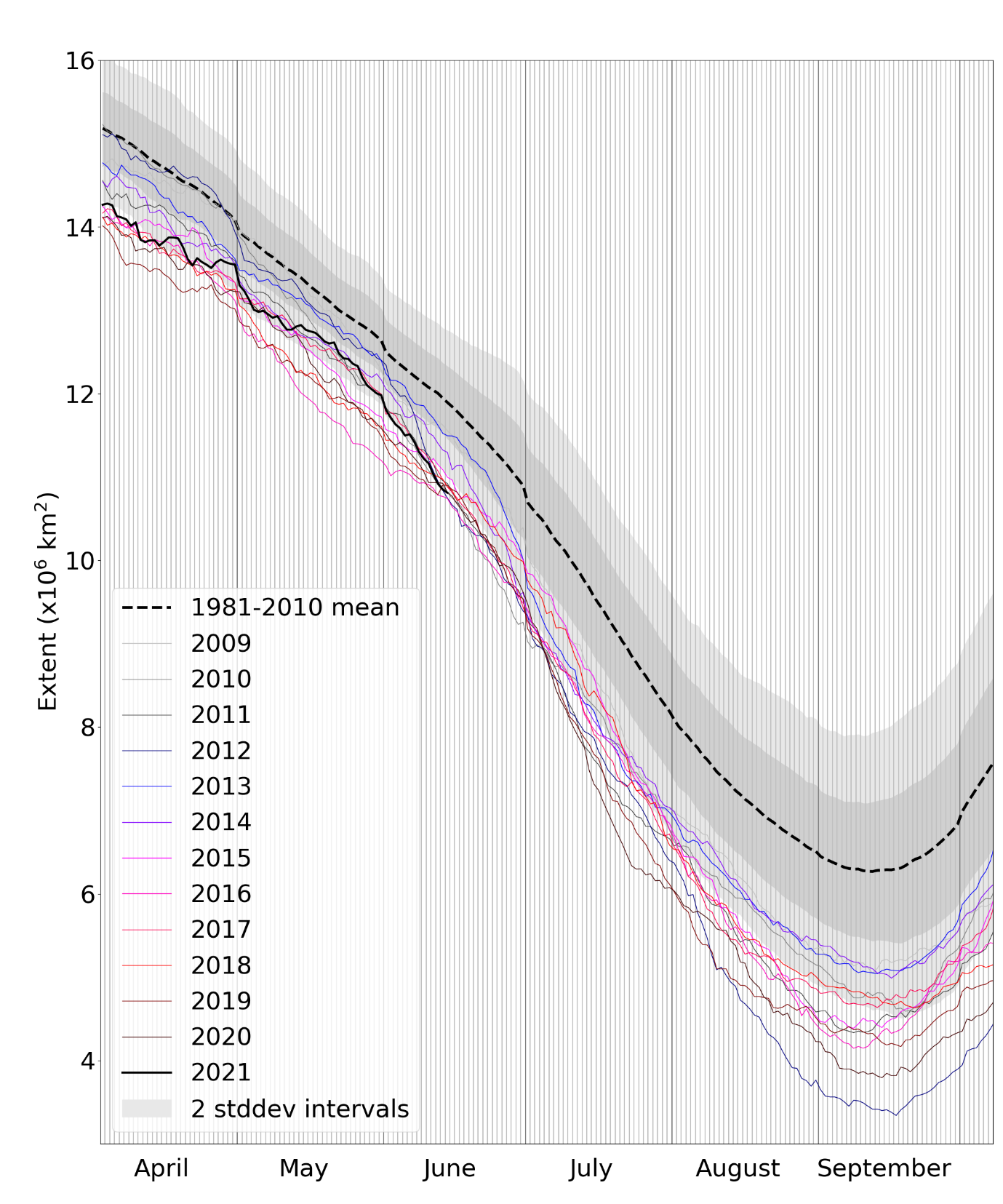
Figure 1. Daily Arctic sea ice extent for 2021, compared with recent years and the 1981-2010 average with ± 1 and 2 standard deviation intervals indicated by the shaded areas. Data are from the National Snow and Ice Data Center (NSIDC).
Extent was well below average in the Barents, Kara, Laptev and Chukchi Seas, but nearer average in the Beaufort and East Siberian Seas where melting had only recently commenced (Figure 2).
 Figure 2. Arctic sea ice extent on 14th June 2021, with 1981-2010 average extent indicated in orange, and the regions referred to in the text labelled. Underlying map and data courtesy of NSIDC.
Figure 2. Arctic sea ice extent on 14th June 2021, with 1981-2010 average extent indicated in orange, and the regions referred to in the text labelled. Underlying map and data courtesy of NSIDC.
May 2021 in context
Average Arctic sea ice extent for May 2021 was 12.86 million square km according to the Hadley Centre Sea Ice and Sea Surface Temperature (HadISST) 1.2 dataset (Rayner et al., 2003). This was 0.49 million square km below the 1981-2010 average, but 0.37 million square km above the long-term linear trend (Figure 3).
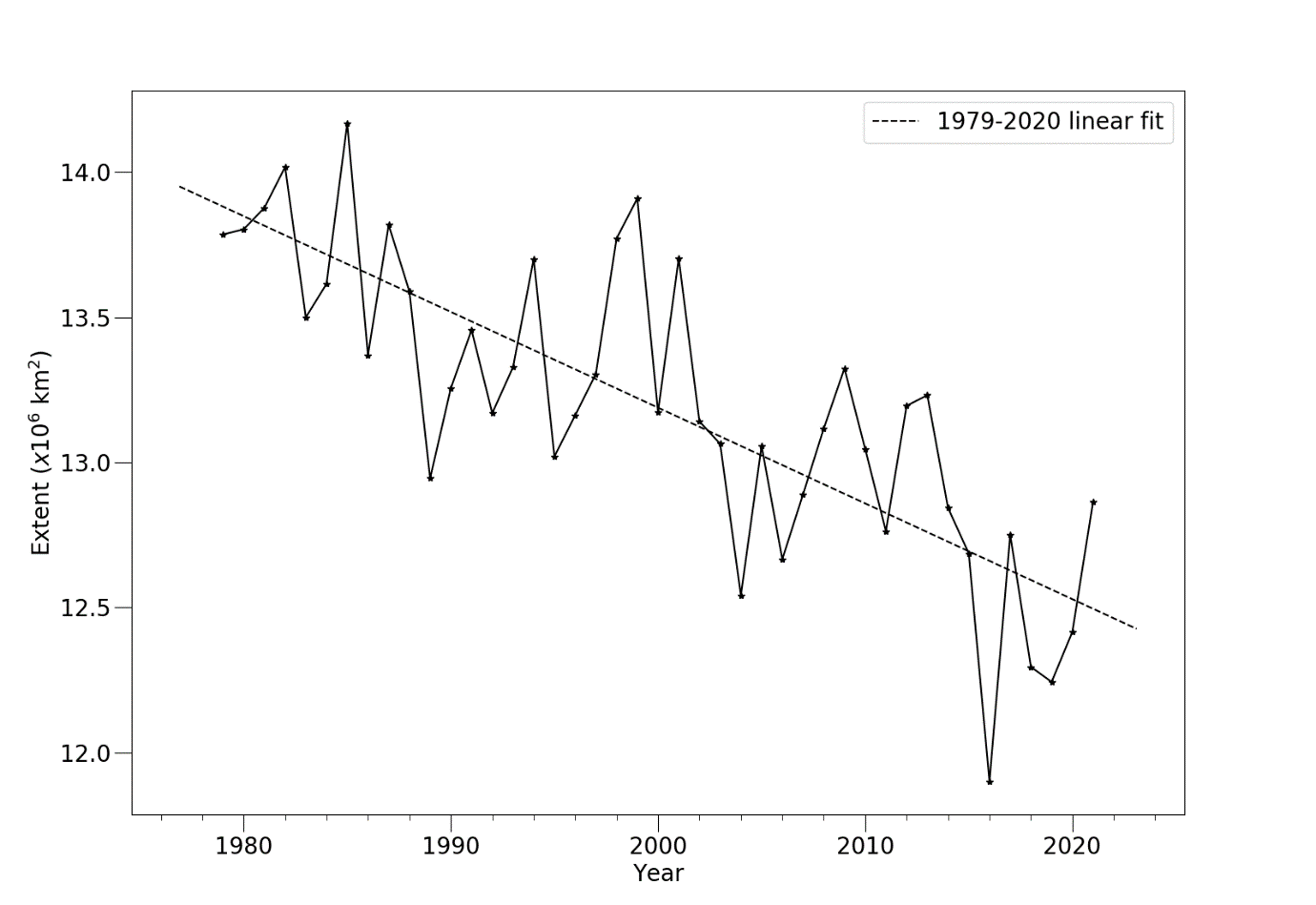
Figure 3. Average May Arctic sea ice extent according to the HadISST 1.2 dataset (Rayner et al., 2003).
Review of atmospheric drivers in winter
Winter 2020-21 was the joint 4th mildest on record in the Arctic (Figure 4), as measured by November – March average temperature above 70 °N at the 925 hPa level (about 1km high in the atmosphere). Temperatures were 2.3°C warmer than the 1981-2010 average but did not come close to matching the exceptional mildness of the consecutive winters 2015-16, 2016-17 and 2017-18, (4.3, 4.3 and 3.5°C above average respectively). Winter 2020-21 was characterised by persistent high pressure over Scandinavia, Western Siberia and the Barents and Kara Seas (Figure 5a), which drove circulation of mild air over much of the Arctic Ocean via Greenland and North America. However, the Beaufort and Chukchi Seas saw near-normal temperatures (Figure 5b). The Siberian coastal seas also saw colder conditions at times, particularly towards the end of winter.
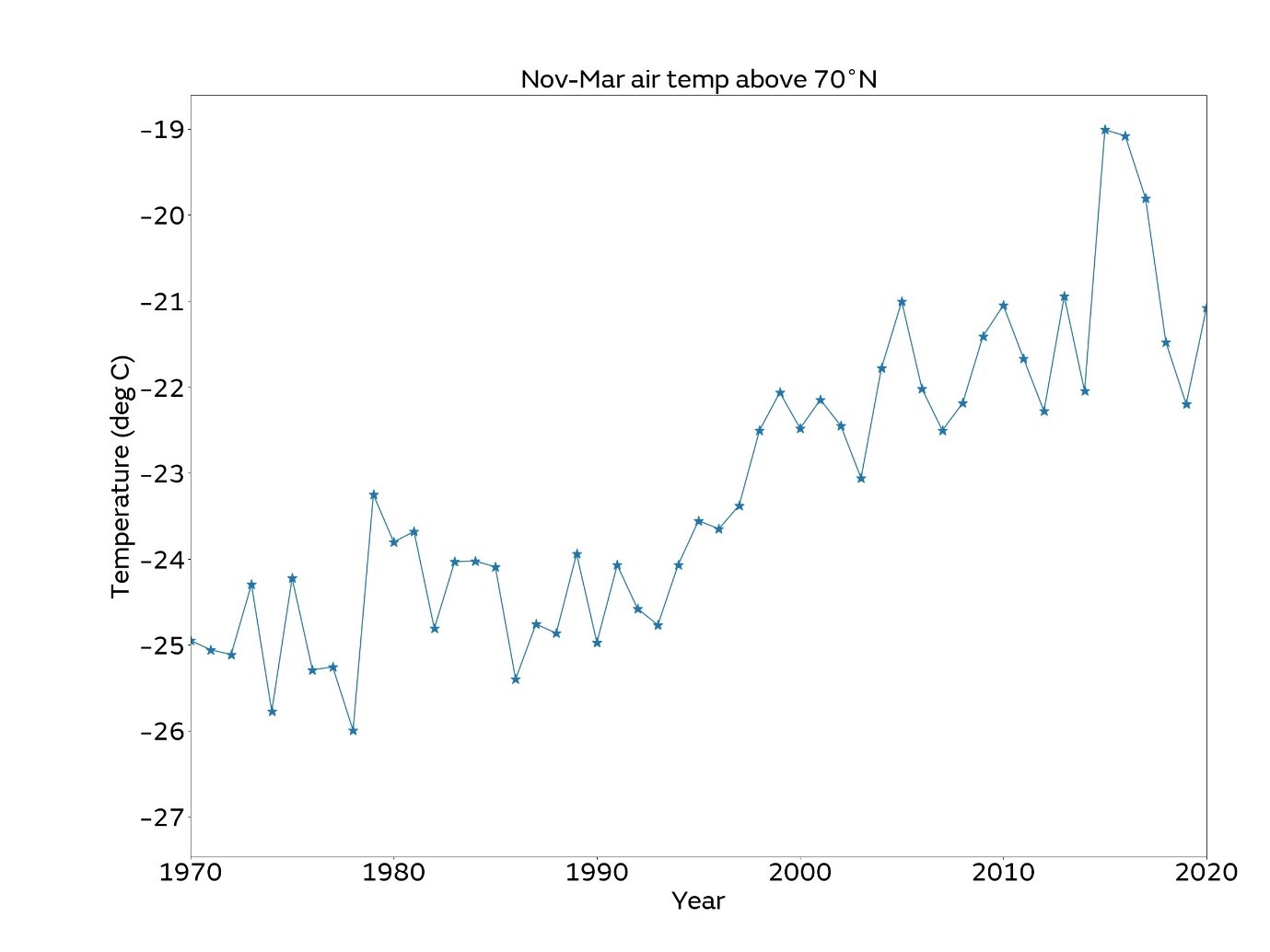
Figure 4. Average November-March air temperature (°C) at 925 hPa for the region north of 70 °N from 1970-present, according to the NCEP reanalysis (Kalnay et al., 1996).
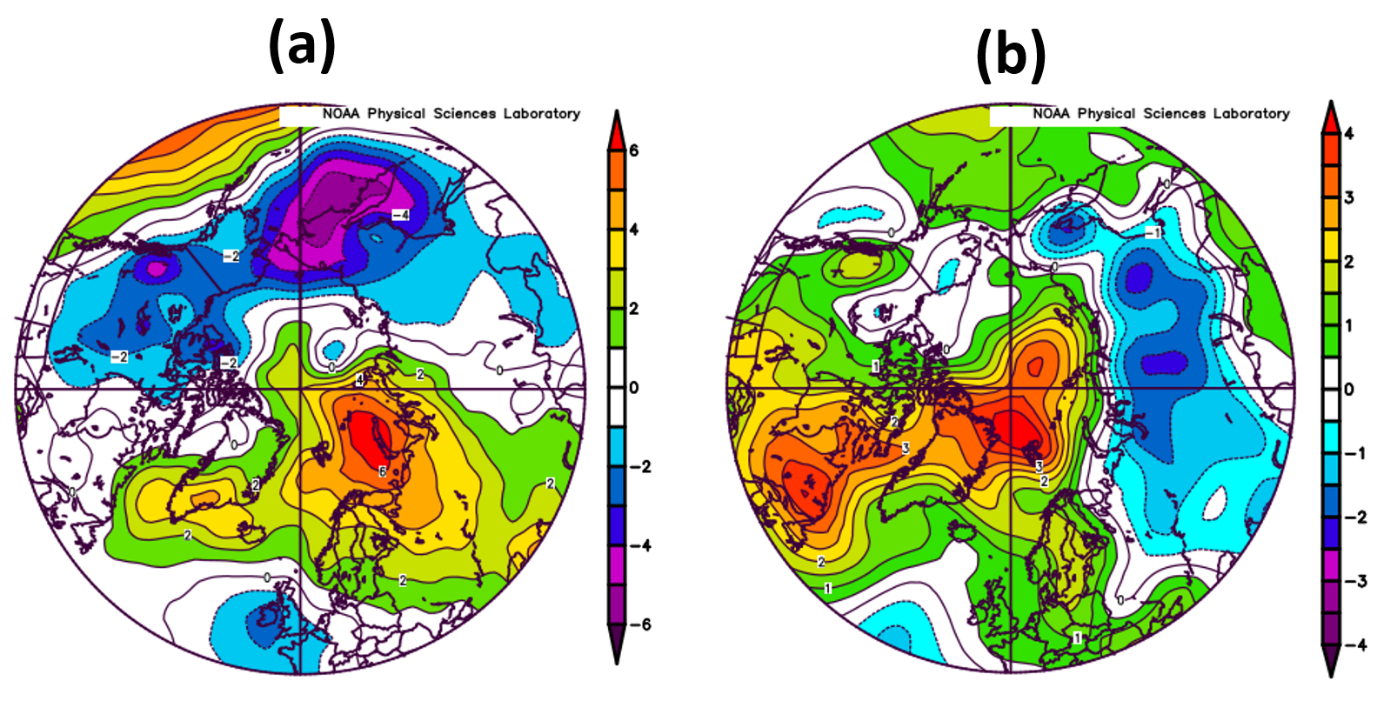
Figure 5. Near-surface meteorological conditions for November 2020 – March 2021 relative to the 1981-2010 long-term average: (a) mean sea level pressure anomaly (hPa); (b) surface air temperature anomaly (°C). Data are from the NCEP reanalysis (Kalnay et al., 1996).
According to estimates from CryoSat-2 radar altimetry (Tilling et al., 2018) and the PIOMAS forced ice-ocean model (Schweiger et al., 2011), Arctic sea ice is likely to be thinner than the 2011-2020 average over the Central Arctic and in the region north of the Canadian Archipelago, Greenland and the Fram Strait. However, there are regions of ice likely thicker than the 2011-2020 average in the Siberian coastal seas, as well as in the Beaufort Sea north of Alaska. PIOMAS estimates these regions to be more extensive than does CryoSat-2 (Figure 6). This is consistent with winter temperatures having been nearer average in these regions (Figure 5b).
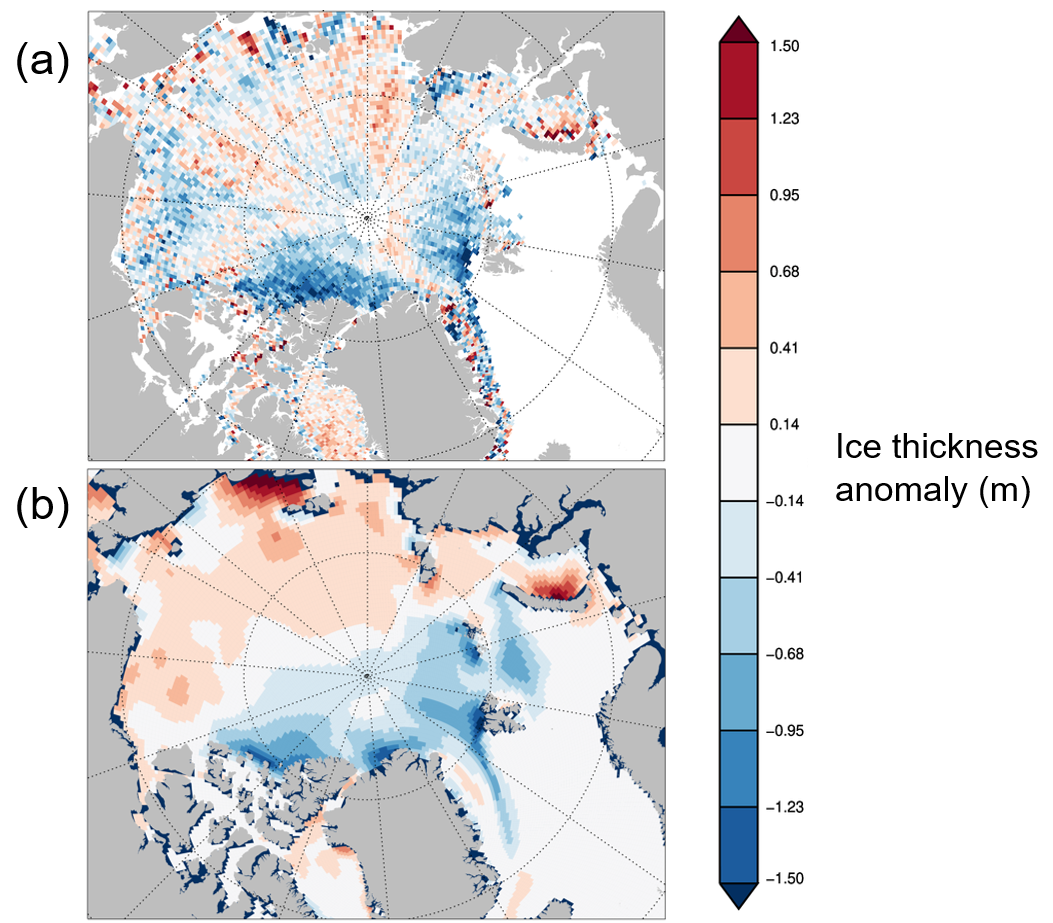
Figure 6. Arctic sea ice thickness anomaly for April 2021 relative to the 2011-2020 average, according to (a) CryoSat-2 radar altimetry estimates, (b) PIOMAS forced ice-ocean model estimates. Images reproduced from Polar Science Center.
Outlook for September
There is no significant correlation between ice extent in mid-June and the seasonal minimum extent in September, as the severity of melt is heavily dependent on Arctic weather conditions over the summer. Statistical predictions based on daily extent only start to achieve some skill by mid-July. Hence it is not possible to predict September sea ice extent with any confidence at this point in the season.
Antarctic sea ice state
Antarctic sea ice extent on 14th June 2021 was 13.44 million square km, 0.24 million square km above the long-term 1981-2010 average (Figure 7). Extent is not uniformly above average throughout the Antarctic, with some regions of below-average extent, such as the Ross Sea, contrasting with other regions of above-average extent, such as the Bellingshausen Sea and Indian Ocean sector (Figure 8).

Figure 7. Daily Antarctic sea ice extent for 2021, compared with recent years and the 1981-2010 average with ± 1 and 2 standard deviation intervals indicated by the shaded areas. Data are from the National Snow and Ice Data Center (NSIDC).
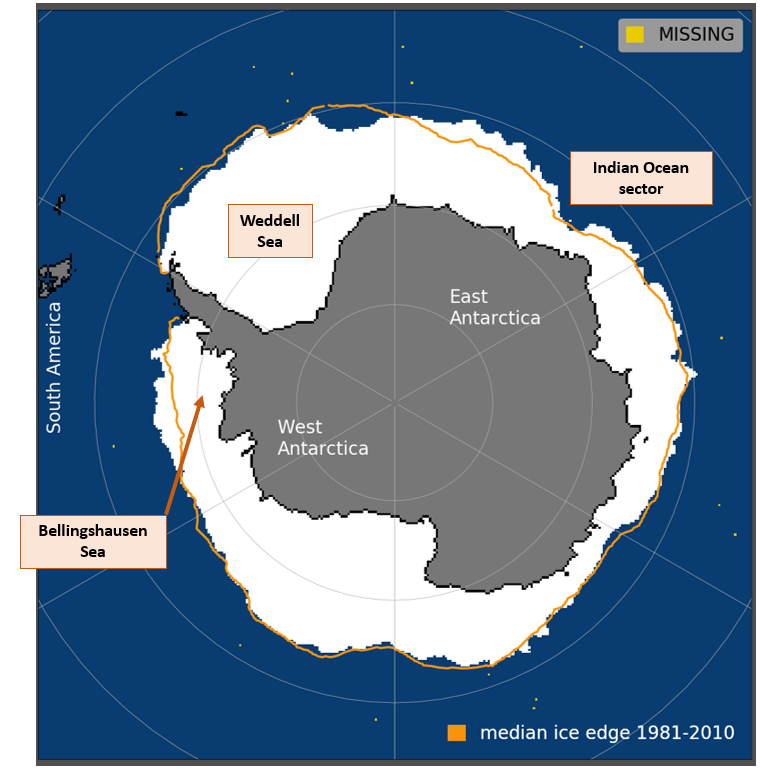
Figure 8. Antarctic sea ice extent on 14th June 2021, with 1981-2010 average extent indicated in orange, and the regions referred to in the text labelled. Underlying map and data courtesy of NSIDC.
References
Kalnay, E., and Coauthors: The NCEP/NCAR 40-Year Reanalysis Project. Bull. Amer. Meteor. Soc., 77, 437–472, https://doi.org/10.1175/1520-0477(1996)077<0437:TNYRP>2.0.CO;2, 1996.
Rayner, N. A.; Parker, D. E.; Horton, E. B.; Folland, C. K.; Alexander, L. V.; Rowell, D. P.; Kent, E. C. and Kaplan, A.: Global analyses of sea surface temperature, sea ice, and night marine air temperature since the late nineteenth century. J. Geophys. Res., Vol. 108, No. D14, 4407, https://doi.org/10.1029/2002JD002670, 2003.
Schweiger, A., Lindsay, R., Zhang, J., Steele, M., Stern, H and Kwok, R.: Uncertainty of modelled arctic sea ice volume, J. Geophys. Res. (Oceans), 116, C8, https://doi.org/10.1029/2011JC007084, 2011.
Tilling, R. L., Ridout, A. and Shepherd, A.: Estimating Arctic sea ice thickness and volume using CryoSat-2 radar altimeter data, Adv. Space Res., Volume 62, Issue 6, Pages 1203-1225, ISSN 0273-1177, https://doi.org/10.1016/j.asr.2017.10.051, 2018.


